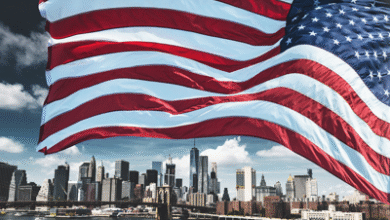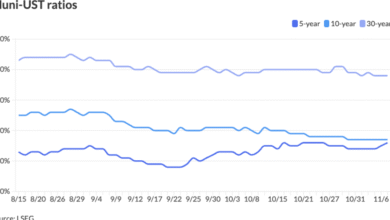The US convertible bond market has performed strongly this year, outperforming US equities and high-yield bonds.

The U.S. convertible bond market has performed remarkably well, becoming one of the strongest asset classes this year.
According to CITIC Securities App, the U.S. convertible bond market has performed remarkably well, becoming one of the strongest asset classes this year. Driven by raw materials, technology stocks, and a range of growth enterprises, the overall return rate of convertible bonds has outperformed most major asset categories.
As per the ICE BofA U.S. Convertible Bond Index, as of last Friday, the cumulative return of convertible bonds this year was approximately 14%, surpassing the S&P 500’s 13% during the same period. Meanwhile, the S&P MidCap 400 Index rose by 5%, and the SmallCap 600 Index increased by 4%. Additionally, the return rate for the primary high-yield bond ETF, iShares iBoxx USD High Yield Corporate Bond ETF, stood at 7%.
The two largest convertible bond ETFs have delivered even stronger performances. The SPDR Bloomberg Convertible Bond ETF (CWB.US), with $4.4 billion in assets under management, has risen by 15% this year. The iShares Convertible Bond ETF, managing $2.8 billion in assets, has gained 16%. Both funds hit a new 52-week high on Tuesday morning. Analysts noted that this makes 2025 one of the best years for absolute and relative returns in the convertible bond sector over the past decade. Typically, convertible bonds yield less than stocks during market upswings because they are designed to capture most of the upside of the underlying stock while protecting investors during downturns. However, in 2024, the ICE BofA Convertible Bond Index only increased by 11%, significantly lagging behind the S&P 500’s 25% rise. This year’s reversal is particularly striking.
Michael Youngworth, Head of Convertible Bond Research at Bank of America Securities, stated: ‘Convertible bonds are among the leading asset classes of 2025, outperforming both equities and high-yield debt, benefiting from the rise of high-beta stocks.’ High-beta stocks, known for their greater volatility, typically experience faster gains during market rallies. Key contributors to this year’s market performance include convertible bonds issued by companies such as Bloom Energy (BE.US), MP Materials (MP.US), and Boeing (BA.US). Boeing’s convertible preferred shares, issued last year, have risen by about 40% since their launch, driven by a significant rebound in Boeing’s share price. Furthermore, Alibaba (BABA.US), one of the largest overseas issuers, saw substantial increases in both its stock price and convertible bond prices this year, recently completing a $3.2 billion convertible bond issuance.
Currently, the U.S. convertible bond market stands at approximately $325 billion, but retail investor participation remains low. The complex structure of these products poses a significant barrier for individual investors, and most financial advisors are not sufficiently familiar with this market. The market is primarily dominated by institutional investors, especially arbitrage traders who engage in arbitrage by purchasing convertible bonds while shorting the issuer’s common stock. With credit spreads narrowing this year, convertible bond arbitrage strategies have performed exceptionally well. Most convertible bonds trade over-the-counter, similar to conventional bonds; however, some convertible preferred shares, such as Boeing’s large issuance, are listed on the New York Stock Exchange or Nasdaq, offering liquidity closer to that of equities.
According to Bank of America research data, U.S. convertible bond issuance has reached $75 billion so far this year, with projections indicating it will exceed the $84 billion recorded in 2024. The largest new issuances in 2025 come from companies like DoorDash (DASH.US), GameStop (GME.US), Super Micro Computer (SMCI.US), and Strategy (MSTR.US). In a client report, Youngworth described the current market environment as a ‘Goldilocks scenario,’ characterized by a perfect combination of low interest rates, tight credit spreads, and high volatility. He pointed out that the market is currently priced at its most aggressive level in three years, with nearly 50% of new issues being zero-coupon (non-interest-bearing). More notably, over half of this year’s global issuance consists of convertible bonds issued without specific use of proceeds, intended solely for corporate daily operations or expansion—a phenomenon unseen since the pandemic-induced financing wave. The current average coupon rate is 2%, with an average conversion premium of around 35%.
Although convertible bonds have shown impressive performance this year and provided issuers with unprecedented financing convenience, analysts caution that investors should remain cautious. As valuations rise and zero-coupon transactions increase, future risks may escalate. Historically, as hybrid instruments combining equity and debt characteristics, convertible bonds have delivered significantly better returns than the bond market while tracking equity markets, making them a crucial component of diversified investment portfolios in the long term.
Credit: Source link






